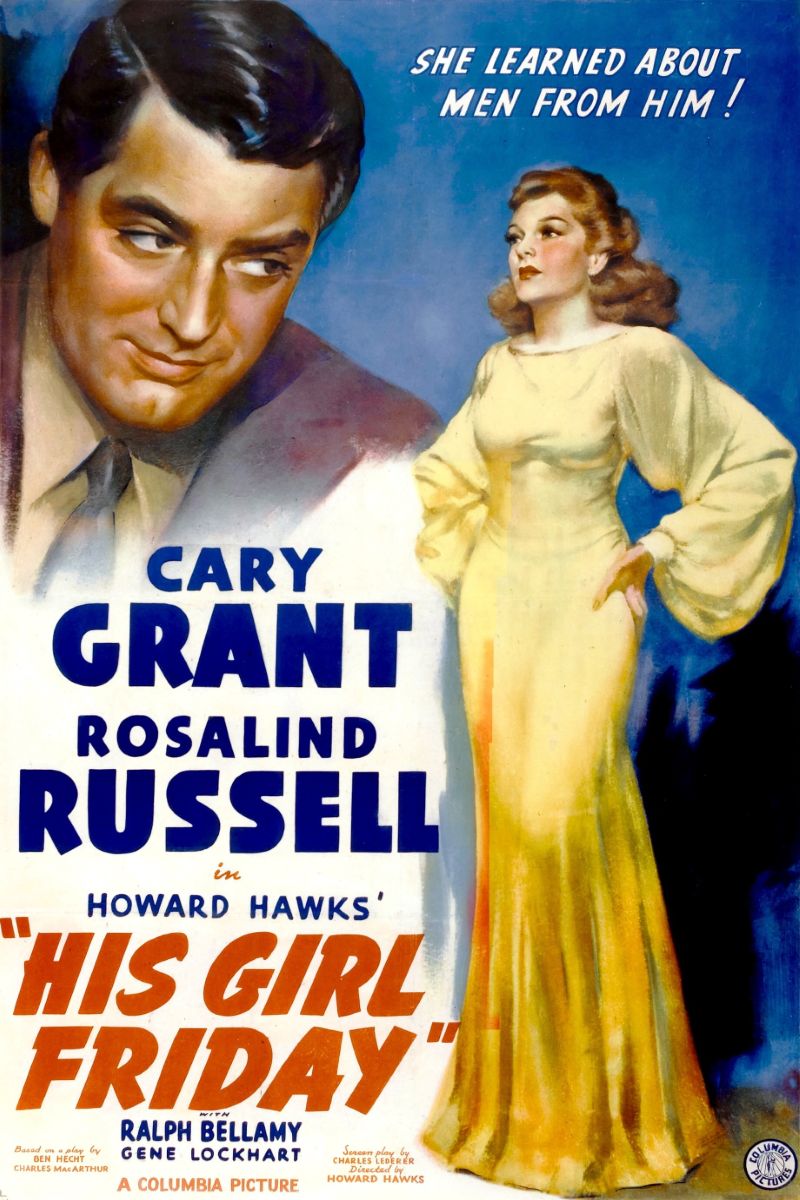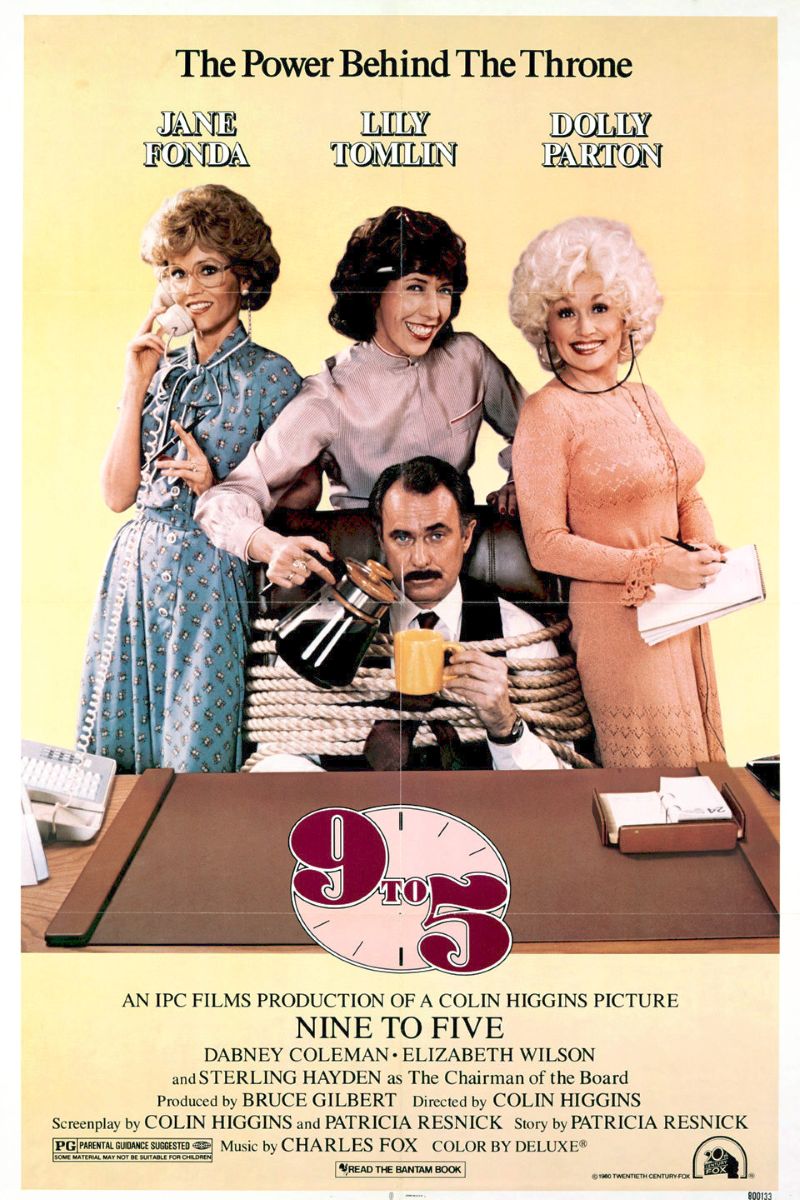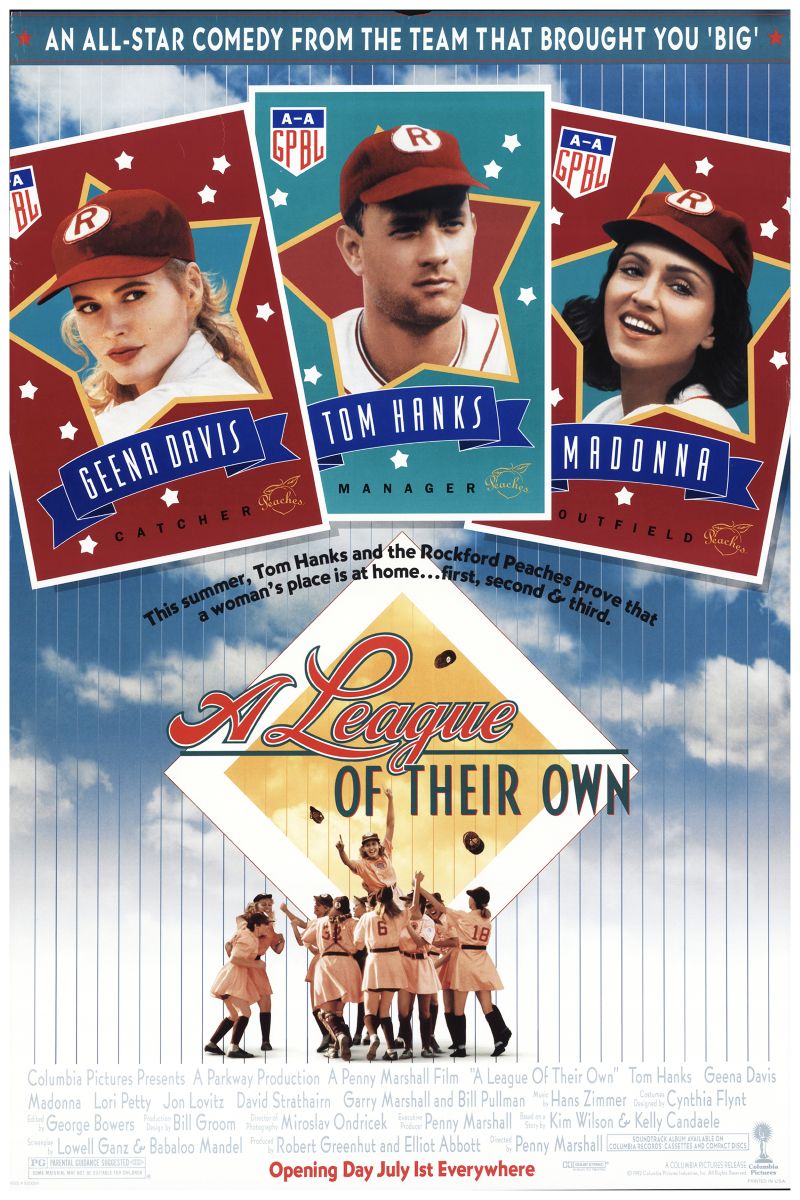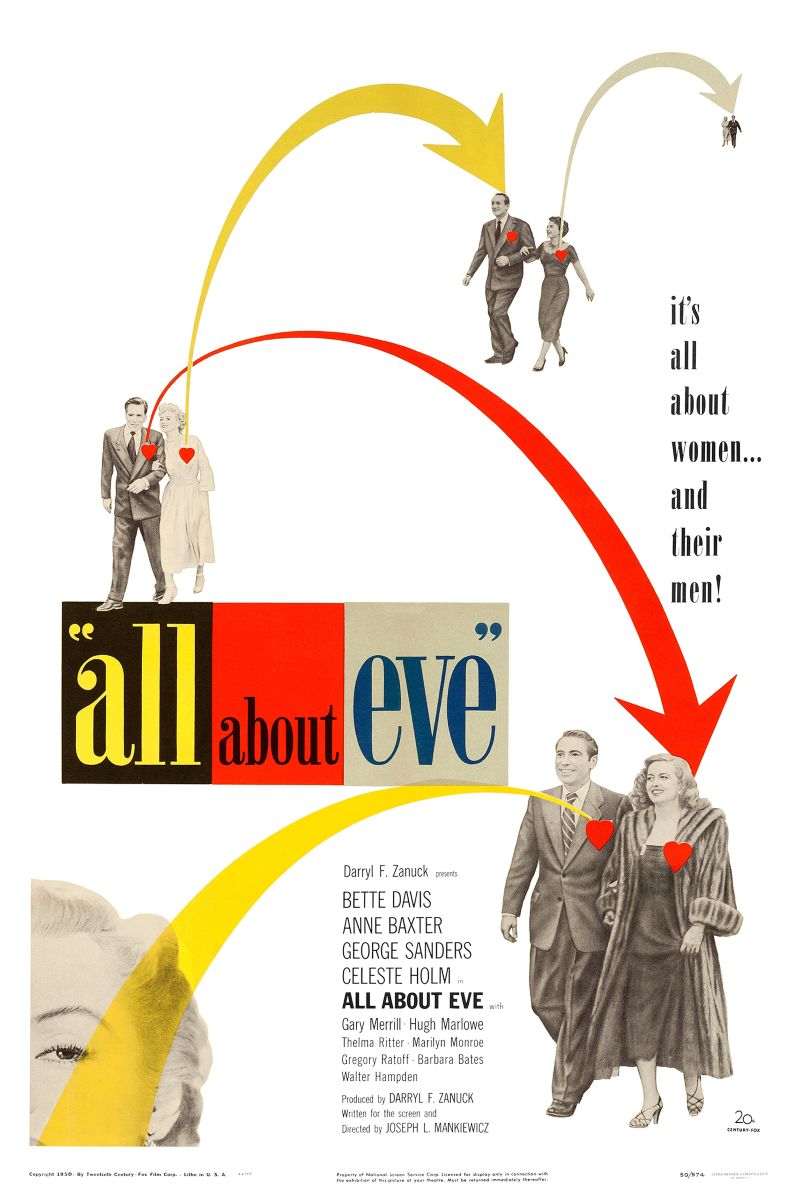
His Girl Friday
His Girl Friday
Released in 1940, this Howard Hawks rom-com still resonates with progressive themes today. It stars Rosalind Russell as Hildy, a star journalist who has her own ideas about what she wants for her life (traditional and non-) and isn't going to let her boss-slash-husband, played by Cary Grant, get in the way.
主演
🎥 影评与解读
“His Girl Friday” stands as one of the most revolutionary feminist works of Hollywood’s Golden Age, with director Howard Hawks creating what appears to be a lighthearted screwball comedy that actually serves as a profound political manifesto about workplace equality, economic independence, and women’s right to choose. Rosalind Russell’s Hildy Johnson represents not only one of the most powerful female characters of the 1940s screen but also a fundamental subversion of traditional gender roles. In an era when women were expected to abandon careers upon marriage, this film boldly proposed the possibility that women could simultaneously possess love, career, and personal autonomy.
From workplace equality perspectives, Hildy’s character carries groundbreaking significance. She is not a typist or secretary in the newsroom but a genuine ace reporter who has earned equal status in the male-dominated journalism industry through her professional capabilities and news instincts. Through her work performance, the film demonstrates that women are completely equal to male colleagues in intelligence and professional competence, a portrayal that challenged society’s widespread doubts about women’s abilities in 1940. More importantly, Hildy’s value is not defined through her relationships with men but through her professional achievements.
The film’s exploration of economic empowerment carries profound social significance. As a successful reporter, Hildy possesses the capacity for economic independence, enabling her to maintain autonomy in personal choices. She doesn’t need to rely on men for survival, providing her with a foundation for equal negotiation in romantic relationships. When Walter (Cary Grant) attempts to retain her services, he must appeal to professional challenges rather than economic necessity, a setup that subverts the traditional romantic comedy pattern of female economic dependence on males.
From the historical context of First Wave Feminism, this film emerged twenty years after American women had just gained voting rights. Although legally granted political rights, social expectations for women’s roles remained quite conservative. Hildy’s character represents the ideal of the New Woman—she can function in the public sphere without abandoning personal happiness. This possibility of dual identity held strong inspirational power for female audiences of the time.
The film’s critique of media representation also deserves deep analysis. Through the newsroom setting, the film demonstrates how media shapes public opinion and the important role journalists play in society. Hildy’s presence as a female reporter constitutes a challenge to the male-dominated media industry. She not only reports news but influences news presentation through her professional judgment, an agency that embodies women’s important role in information dissemination and social consciousness formation.
Howard Hawks’s directorial techniques also serve the film’s feminist themes. The famous rapid dialogue and overlapping lines not only create tension and excitement but more importantly demonstrate Hildy’s intellectual agility. Her ability to maintain mental clarity and match Walter point-for-point in fast-paced exchanges challenges stereotypes about women’s intellectual inferiority to men.
From female friendship perspectives, while the film primarily focuses on Hildy’s relationships with two male characters, her interactions with other female characters remain equally important. Particularly her relationship with Mollie Malloy demonstrates sympathy and mutual understanding between women. This female solidarity was uncommon in films of that era, emphasizing the importance of women’s community.
The film’s exploration of identity formation issues demonstrates modernity. Hildy’s core conflict is not choosing which man to love but choosing what kind of woman to become. She can choose to become Bruce’s traditional wife, living a comfortable middle-class life, or return to journalism, continuing her challenging and fulfilling career. This complexity of choice reflects the identity challenges faced by modern women—how to find balance between social expectations and personal aspirations.
From political consciousness perspectives, Hildy’s journalist identity represents not merely career choice but political stance. Through news reporting, she participates in discussions of social issues, demonstrating women’s political awareness and social responsibility. In the Earl Williams case, her reporting serves not only as journalism but as exposure of judicial injustice and advocacy for the vulnerable.
Beneath the romantic comedy exterior lies profound critique of marriage institutions. Walter and Hildy’s relationship builds on professional collaboration rather than traditional gender role divisions. Their love is based not on dependence but on mutual respect and intellectual compatibility. This equal partnership model provides new imaginative space for modern marriage.
From education equality perspectives, Hildy clearly received excellent education, enabling her to establish herself in journalism. The film suggests education’s importance for women’s liberation—only through education to acquire professional skills can women achieve economic independence and subsequently gain equal status in social and family relationships.
The film’s use of time also carries political implications. The entire story unfolds within just a few hours, creating urgency that serves not only dramatic effect but symbolizes the pressure women face when making major life decisions. Hildy must decide her future within limited time, reflecting the urgency and importance of women’s choices in patriarchal society.
From costume and visual design perspectives, Hildy’s attire is both professional and fashionable, meeting work requirements while maintaining feminine charm. This visual design refuses the binary opposition requiring women to choose between professionalism and feminine qualities, demonstrating the possibility of modern women’s composite identity.
The film’s portrayal of male characters also carries progressive significance. Although Walter has manipulative tendencies, his recognition of Hildy’s professional abilities is genuine. His retention strategies rely primarily on work needs rather than emotional manipulation, a setup that somewhat acknowledges women’s professional value. Meanwhile, Bruce represents the traditional good man, but his limitations are also cleverly revealed, suggesting that traditional gender role divisions might limit women’s development.
From psychological perspectives, Hildy’s character demonstrates modern women’s psychological complexity. She desires both secure, stable life and refuses to abandon challenging career. This internal conflict reflects the psychological pressure and choice difficulties women face during social transformation periods. The film doesn’t simplify this complexity but acknowledges the multifaceted nature of modern women’s lives.
The film’s dialogue design also embodies gender equality concepts. Hildy’s conversations with Walter are filled with wit and humor; she never assumes passive positions and always manages clever rebounds and rebuttals. This dialogue pattern demonstrates intellectual gender equality, challenging traditional notions that women should occupy secondary positions in conversation.
From sociological perspectives, the film reflects gender role changes occurring in 1940s American society. Although social mainstream still expected women to exit the workforce after marriage, increasing numbers of women began questioning the reasonableness of such arrangements. Hildy’s character represents the vanguard of this social transformation, her choices providing new possibility templates for other women.
The film’s ending treatment also deserves deep analysis. Hildy ultimately chooses to remain in journalism, but this choice doesn’t completely reject traditional female roles but redefines personal realization methods. She might reconcile with Walter, but this relationship would build on equal collaboration rather than traditional patriarchal marriage patterns.
From film industry perspectives, “His Girl Friday’s” success proved the commercial value of films featuring strong female protagonists. Rosalind Russell’s excellent performance set an example for later actresses, proving women could display the unity of wisdom, charm, and strength on screen.
The film’s treatment of work-life balance demonstrates remarkable prescience for its era. Hildy’s struggle to integrate professional fulfillment with personal happiness mirrors contemporary discussions about having it all. The film suggests that rather than choosing between career and love, the key lies in finding partners and situations that support rather than constrain women’s ambitions.
From narrative structure perspectives, the film’s real-time urgency creates a pressure cooker environment that reveals character essence. Under deadline pressure, Hildy’s true priorities emerge, demonstrating her commitment to journalism and justice over conventional security. This structure serves as metaphor for how crisis situations reveal authentic selves beneath social conditioning.
The film’s portrayal of journalism as public service also carries feminist implications. Hildy’s dedication to exposing corruption and defending the vulnerable positions journalism as more than mere career but as social mission. This elevation of women’s work beyond personal ambition to public good challenges dismissive attitudes toward women’s professional contributions.
From performance analysis perspectives, Russell’s portrayal avoids both victimization and superhuman perfection. Hildy displays vulnerability, uncertainty, and moments of doubt alongside her confidence and competence. This realistic characterization makes her achievements more inspiring by acknowledging the genuine challenges women face in male-dominated fields.
The film’s exploration of romantic partnership as professional collaboration offers an alternative to conventional romantic narratives. Walter and Hildy’s professional chemistry translates into romantic attraction, suggesting that intellectual and creative partnerships can provide foundations for lasting relationships. This model prioritizes compatibility over traditional romantic conventions.
Ultimately, “His Girl Friday’s” value lies in providing women with a character model that is both realistic and inspiring. Hildy Johnson tells us that women need not make painful choices between career and love, wisdom and charm, independence and relationships. Truly modern women can possess composite identities and achieve success and satisfaction in different life domains. In a world still fighting for genuine gender equality, this message retains strong contemporary relevance and motivational power.
🏆 获奖与荣誉
- • National Film Registry Selection
- • AFI's 100 Years...100 Laughs #19
- • Criterion Collection Release
- • TIME Magazine All-TIME 100 Movies
⭐ 评分与链接
相关推荐
评论与讨论
与其他观众一起讨论这个视频
加入讨论
与其他观众一起讨论这个视频
评论加载中...



